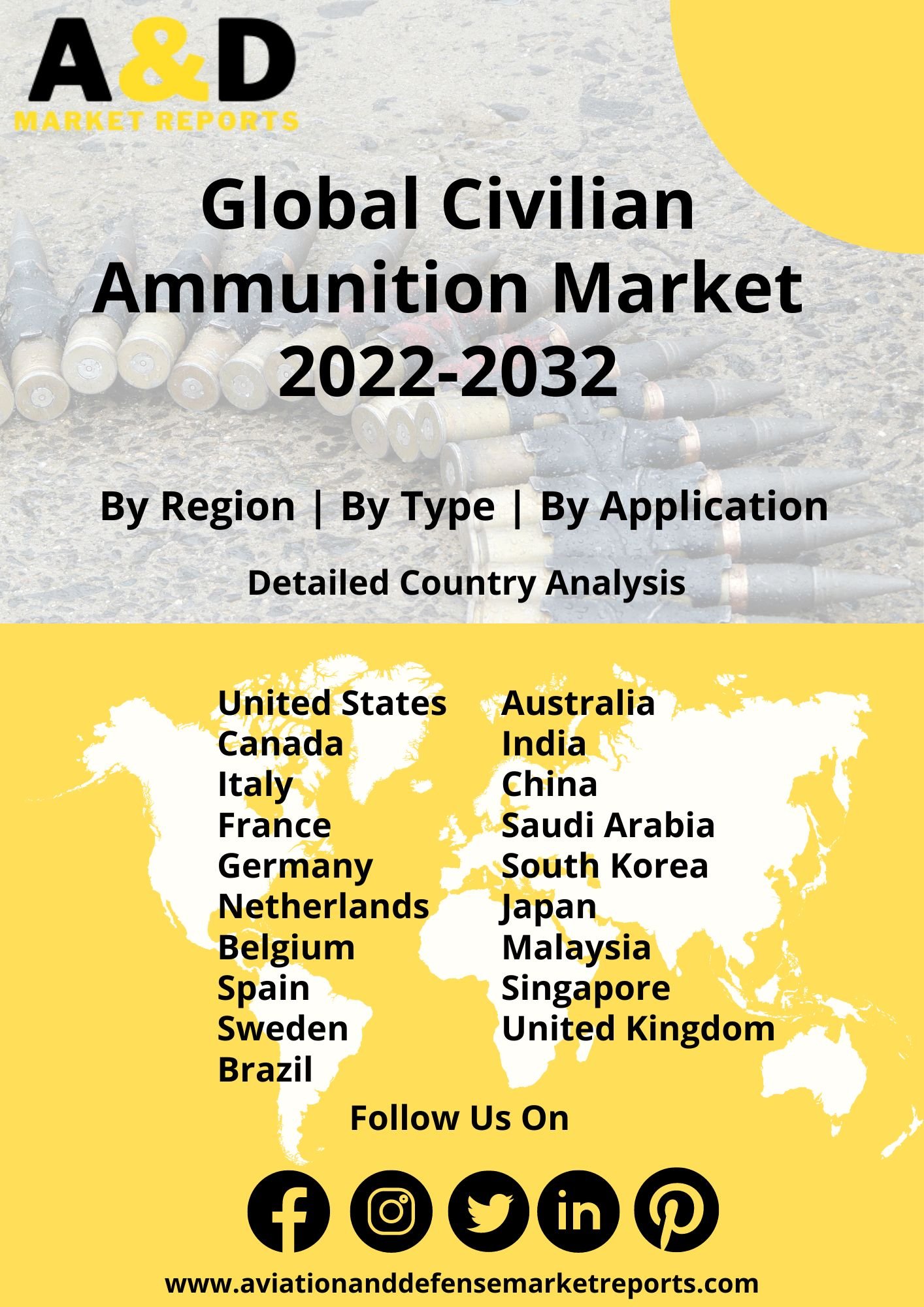Description
Ammunitions are quantified as firearms or projectiles that are propelled using weapon systems. According to the Small Arms survey conducted in the year 2018, it was noted that global firearms circulations were estimated to be roughly 1 billion. Roughly 85% of this value was owned by civilians which accounts for a value of 133 Million, while law enforcement agencies and military arsenals account for 13% and 2% respectively. The Global stockpile increased from a value of 650 Million in 2006 to 857 Million in the year 2017. The United States, Yemen, and Iceland account for three of the key economies within the commercial ammunitions market. Over 40 firearms are owned across these regions per 100 populations. The rate of civilian firearms holding was noted to be 120.5 in the US, 52.8 in Yemen, and 39.1 in Montenegro as well as Serbia.
On studying the overall possession of civilian munition within the global markets, it is noted that the number of unregistered weapons is greater as opposed to registered and licensed firearms. The countries, the US, India, China, and Russia account for the key markets for illegal trading of firearms. The increased number of unlicensed weapons within the civilian market is predominantly due to the rise in crime rates across the world. As of 2017, the United States was noted to have roughly 393,300,000 illegal firearms.
The implementation of norms and the growth in stringent regulations that guard the possession of firearms is poised to limit the growth of this market. It is recorded that countries like New Zealand have placed a ban on semi-automatic weapons owing to the increased endangerment of civilian safety. Japan is also stated as one of the nations with strict gun control norms. The possession of shotguns and air rifles is legal within Japan, however a civilian is to gain access to the same post repeated tests. The contender for a licensed gun is expected to attend lessons, give a written test and a shooting range assessment followed by mental health checkups as well as background checks. Contrarily associations like the National Rifle Association are constantly striving against all forms of gun control norms. The association believes that limited gun control regulations will hereafter boost civilian safety during terrorist operations, insurgencies, and other life-threatening scenarios.
On studying the number of firearms purchased within the United States, it is noted that assault rifles account for a maximum segment of the market in addition to pistols. The use of assault rifles like AK-47 and AR-15 within the civilian market is poised to threaten civilian safety. Cases of friendly fire, misfires, and improper usage of high-grade ammunition are expected to boost the death toll within the global markets. According to the United Nations, munitions and ammunitions are presently procured in a surplus within the armed forces. Moreover, the number of legitimate holders of firearms is weighted to be substantially lower as opposed to illegal buyers. Therefore, the UN suggests that limiting production and supply would hereafter reduce stockpiling of weapons which can lead to reduced usage of weapons.
On studying the regional competitive mapping for the Global Civilian Ammunition Market, APAC is observed to be a promising regional segment with the fastest growth dynamics. However, North America is expected to be the largest market owing to the presence of the US. The crime rate in developing countries is considered to be high owing to which the legal and illegal possession of weapons is poised to increase. As of 2021, India intends to widen the market for Austrian Glock Pistols to its domestic civilian market. The country plans on expanding its local manufacturing facility for Glock Pistols through a joint venture between Tamil Nadu-based Countermeasures Technologies Pvt. Ltd. (CMT) and Glock Ges.m.b.H, Austria. The Pistols are to be produced in the CNT plant stationed within Tamil Nadu. The joint venture was initially signed with the intent of supplying Glock pistols to the Indian government. However, the new agreement entailed the supply of the mentioned product to civilians by the end of March 2021. This initiative was launched in support of the Make in India movement. The Atmanirbhar Bharat movement is anticipated to boost the number of indigenous programs within the nation which is poised to improve employment opportunities throughout India. The growth in direct, indirect, and induced employment within India is poised to improve the spending capacity as well as the purchasing power of the population.
Moreover, India pays a premium price for imported weapons due to its reliance on the international markets for firearms and ammunition. However, the market for licensed firearms holders is restricted within India. The market for law-abiding citizens with a license should increase in the coming decade to boost the total addressable market numbers. The overall competitive mapping for the largest market size within APAC ranges across nations including India, China, Pakistan, and Afghanistan. The illicit possession and trading of weapons are seen to be the highest in regions like Pakistan and Afghanistan. A rise in insurgent activities and militant troops within these regions are poised to be the key factors to influence the same.




